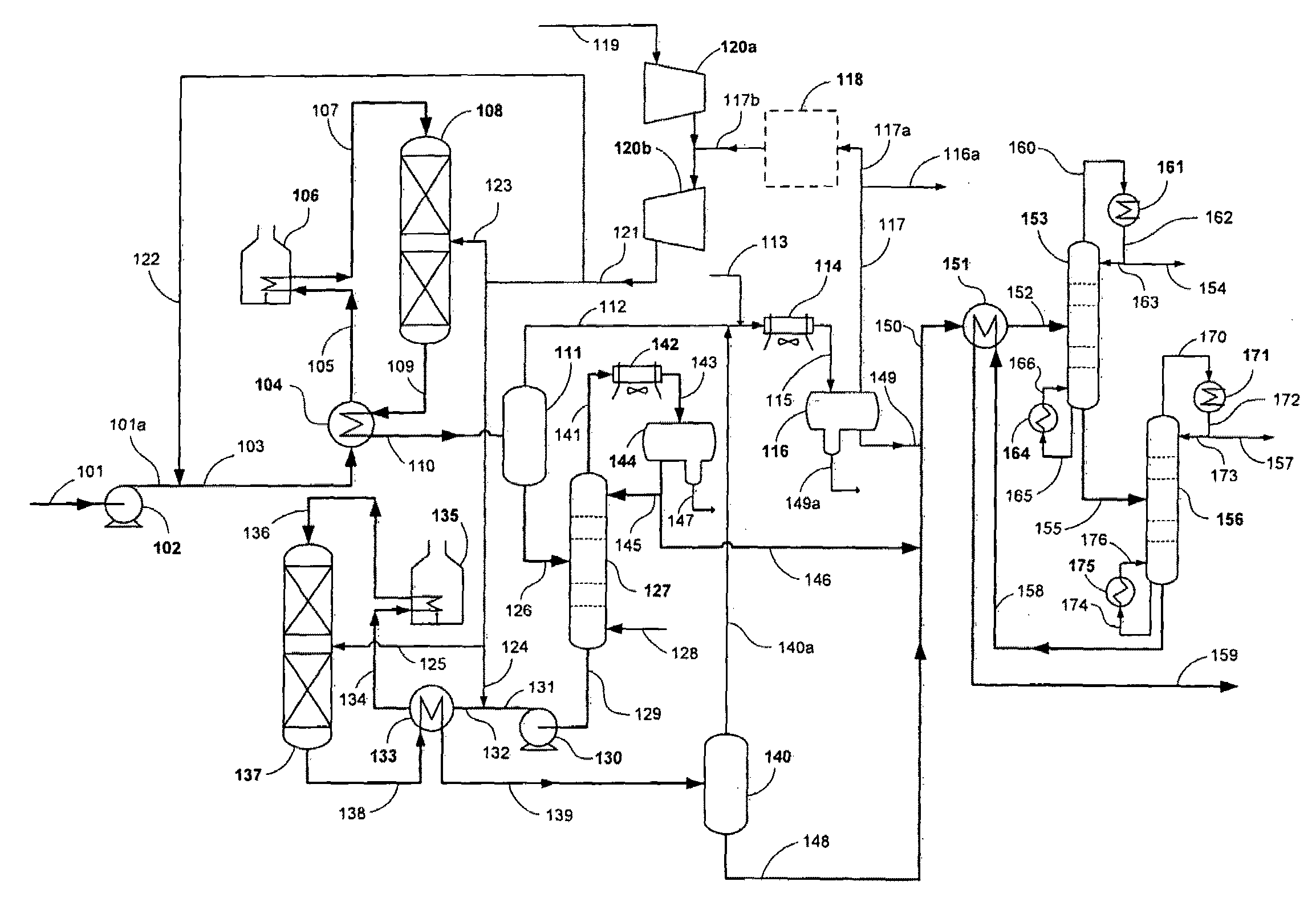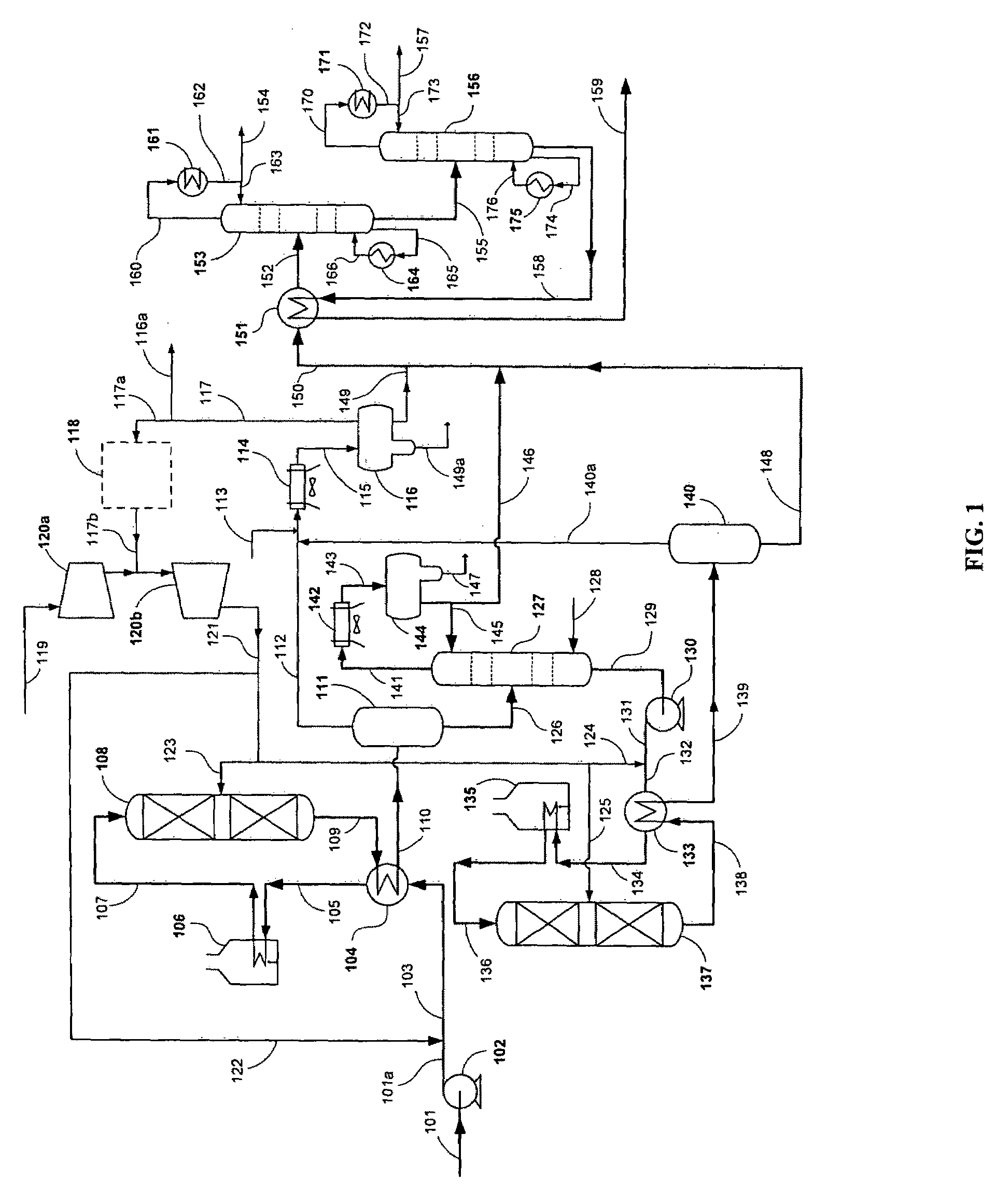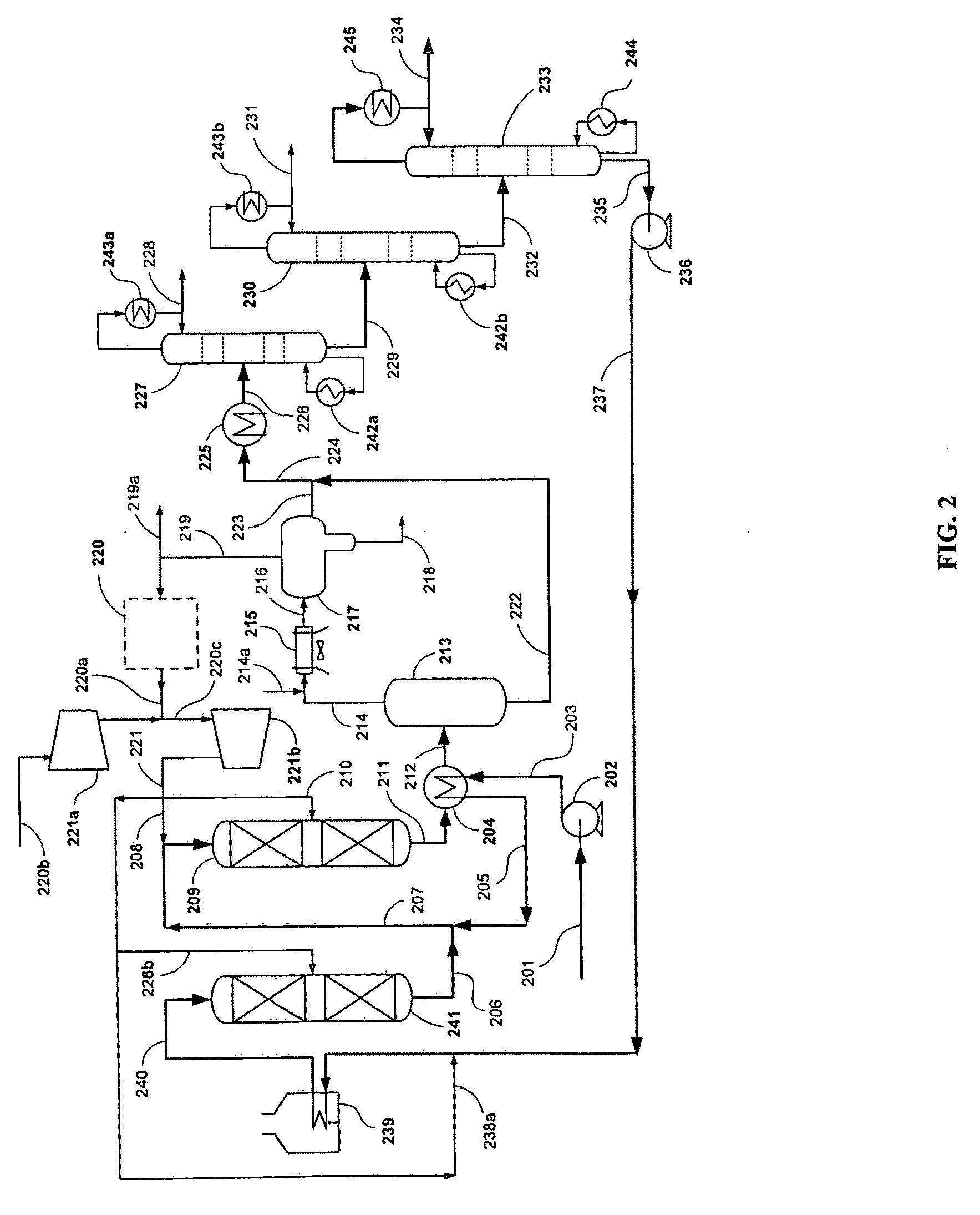Hydrocracking process for biological feedstocks and hydrocarbons produced therefrom
a hydrocracking and biological feedstock technology, applied in the direction of hydrocarbon oils treatment products, gaseous fuels, fuels, etc., can solve the problems of not addressing the low temperature performance problems, affecting the low temperature properties of fuels, etc., and achieves the effect of reducing the freeze point of n-paraffin and significantly reducing the freeze poin
- Summary
- Abstract
- Description
- Claims
- Application Information
AI Technical Summary
Benefits of technology
Problems solved by technology
Method used
Image
Examples
example 1
Hydrotreating of a Biorenewable Feedstock
[0050]The present example demonstrates the conversion of a biorenewable feedstock into a hydrocarbon suitable for hydrocracking. A 100 cc isothermal tubular reactor was filled with 80 cc of a commercially available NiMo catalyst (acquired from Catalyst Trading Corporation, Houston, Tex.) and 70-100 mesh glass beads. The catalyst was sulfided in the presence of hydrogen with dimethyl disulfide at two hold temperatures.: 6 hours at 400° F. and 12 hrs at 650° F. Hydrogen sulfide break-through was confirmed before the temperature was raised from 400° F. to 650° F. at 50° F. / hr. After sulfiding, the reactor was cooled to 400° F.
[0051]Next a triglyceride / fatty acid feed was introduced to the isothermal reactor. The reactor was slowly heated to 650° F. to achieve full conversion of the triglyceride / fatty acid feed to predominantly n-paraffins. The reactor temperature was further increased to 700° F. to maintain good catalyst activity at 80 cc / hr fee...
example 2
Hydrocracking of Predominantly C17 Plus n-Paraffin Feedstock
[0054]A predominantly C17 plus n-paraffin feedstock was used as feed for a hydrocracking pilot plant as shown in Table 2. The predominantly C17 plus n-paraffins were derived in accordance with Example 1.
TABLE 2Hydrocracker Feedstock CharacteristicsHydrocracker Feed Carbon Distribution(Mass %)C12 minus1.2C130.2C140.2C151.9C163.8C1729.9C1857.3C19 plus5.5Hydrocracker Feed PropertiesSpecific Gravity at 60° F.0.794
[0055]The hydrocracker pilot plant system comprised of a single reactor followed by high and low pressure separators to collect the hydrocracker hydrocarbon product. The hydrocracker reactor was loaded with 100 cc of hydrocracking catalyst. The catalyst was a platinum-palladium on amorphous alumina / silica support. The reactor was pressurized to 1,000 psig and reduced at 700° F. under hydrogen flowing conditions for approximately 4 hours. The catalyst was cooled to 400° F. in preparation for introducing feed to the reac...
example 3
Blending of Hydrocracked Middle Distillate and n-Hexadecane
[0058]A hydrocracked middle distillate produced according to Examples 1 and 2 was blended with n-hexadecane at various ratios. The hydrocracked middle distillate used for the blending has an extremely low cloud point at −55° C. produced in accordance with examples 1 and 2. The n-hexadecane component is representative of the predominantly C16 minus n-paraffin light fraction produced by present invention. The n-hexadecane, and thus the predominantly C16 minus n-paraffin light fraction, has a melt point of 18.2° C. which by itself is not suitable for use as a final middle distillate fuel. But when the n-hexadecane component is blended with the hydrocracked middle distillate component, a middle distillate is created having cold temperature properties which are suitable for use as a final middle distillate fuel.
TABLE 4Cold Temperature Properties of Hydrocracked Middle Distillateand n-Hexadecane BlendHydrocrackedMiddle Distillaten...
PUM
| Property | Measurement | Unit |
|---|---|---|
| cloud point | aaaaa | aaaaa |
| cloud point | aaaaa | aaaaa |
| freeze point | aaaaa | aaaaa |
Abstract
Description
Claims
Application Information
 Login to View More
Login to View More - R&D
- Intellectual Property
- Life Sciences
- Materials
- Tech Scout
- Unparalleled Data Quality
- Higher Quality Content
- 60% Fewer Hallucinations
Browse by: Latest US Patents, China's latest patents, Technical Efficacy Thesaurus, Application Domain, Technology Topic, Popular Technical Reports.
© 2025 PatSnap. All rights reserved.Legal|Privacy policy|Modern Slavery Act Transparency Statement|Sitemap|About US| Contact US: help@patsnap.com



